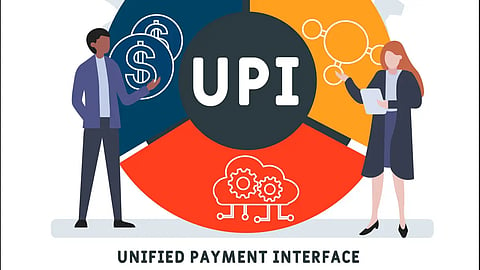

On August 21, 2022, 8:30 pm, the Ministry of Finance issued a clarification via its official Twitter handle @FinMinIndia, putting to rest all speculations about levying UPI transaction charges.
The government is not considering any such charges, it said.
“UPI is a digital public good with immense convenience for the public & productivity gains for the economy,” it said in a Tweet.
The much-needed clarification is, however, raising two pertinent questions. First, how did this discussion about UPI transaction charges begin? Second, what are the alternate methods for UPI service providers to recover their costs?
Here’s all you need to know now that the matter has been put to rest.
On August 17, 2022, the Reserve Bank of India (RBI) published a discussion paper on ‘charges in payment systems’.
One of the rationales suggested that payment systems operators are independent entities which started with an initial outlay of capital. They incurred further expenditure to create and operate safe and secure payment systems, acquire customers, comply with statutes/regulations and generate public awareness, it said.
“Therefore, like any other industry, the objective of promoters includes recovery of costs and generation of sufficient returns to ensure continued operations; the cost to customers/merchants is an outcome of these objectives,” the discussion paper said.
This objective became the key reason for confusion among the general public.
The usage of Unified Payments Interface (UPI) has increased manifold due to rapid digitalisation.
According to the National Payments Corporation of India (NCPI), approximately 6.28 billion UPI transactions were reported in July 2022, amounting to Rs.10.62 billion.
Additionally, stakeholders involved in UPI transactions collectively incur approximately Rs. 2 for ‘processing a UPI-P2M transaction with an average transaction value of Rs. 800, the report said.
This figure however, does not include the incentives provided to users for encouraging UPI payments.
According to Rohit Kumar, CEO and founder, XPay.life, a payments solution company, said, "Due to initiative by the Ministry of Finance and Startup India digital transactions in India are at an all-time high. Infact India is the leading country in doing digital transactions in the world this has been mainly attributed because UPI transactions have been made free of cost to the consumers."
In light of no charges being levied on UPI transactions, the RBI contemplated on three key points -
1] Levying charges on users, or, subsidising the costs
2] If charges are levied, should they be fixed irrespective of the amount or depend on the transaction value?
3] Should the charges be administered, or be made market-dependent?
These questions further increased the possibility of charges being imposed on UPI transactions.
The Ministry of Finance, however, denied the possibility of any such charges, raising another question – how will UPI platforms recover their costs?
According to the Ministry of Finance, the government had already provided financial support to the digital payment ecosystem in 2021. In fact, the Union Cabinet had approved an incentive scheme worth Rs. 1,300 crore for encouraging online transactions through UPI and Rupay debit cards.
Earlier in February 2021, a fund worth Rs. 1,500 crore was earmarked for encouraging digital transactions to compensate for merchant discount rate (MDR) losses, in Budget 2021-22.
According to the RBI, MDR is “the charge recovered by the acquirer from the final recipient of money (i.e., merchant). It is levied as a discount to the transaction amount and is usually recovered during settlement of the payment transaction”.
While the government continues to support digital transactions through various schemes, discussions are ongoing for alternate methods to recover MDR costs.
According to Balaji Jagannathan, co-founder and director, Paycorp.io, a fintech company focussed on payments, the finance ministry’s announcement of not levying charges on UPI payments is a welcome step as UPI has been instrumental in bringing a lot many consumers as well as small and medium enterprises (SMEs) into the formal banking channel.
“UPI payments have ensured that the maximum amount of money passes through the official banking channel. This has resulted in an improved cash position for all banks. It has also brought all SMEs a big step closer to banking benefits and formal credit facilities. All participants in the ecosystem such as SME businesses, banks and the consumer have benefited significantly. So, charging UPI transactions at this point will undo some of the progress made in this direction,” Jagannathan said.
As for alternate methods to recover costs, companies can take other approach such as applying technology to increase their market size.
“Analysing the financial transaction of SME data gives deep insights into their revenue and cost patterns over the last year or so. Banks can take informed decisions to facilitate such SMEs with credit and savings products, based on the analysed data. Fintech companies can extend “Just In Time” supplier payments to medium and large businesses, delivering better cash flow, improved float and, consequently reducing the cost of finance,” he added.
India has leapfrogged the West in digital payments, thanks to UPI. For India to remain at the forefront and continue to promote usage of digital payments, we strongly believe that consumers should not be charged for UPI transactions.
"A charge on UPI transactions will put needless burden on consumers and small merchants and can stifle its growth. A tiered MDR pricing will go a long way in ensuring that small merchants continue to accept UPI while larger merchants participate in the innovation and growth of UPI by paying MDRs," said Nalin Agrawal, co-founder and CEO, Snapmint, an fintech NBFC company.
"For the betterment of entire infrastructure related activities & risk mitigation activities that had to be taken by banks and various service providers there has to be an avenue for the earnings for the banks & the service providers," added Kumar.
